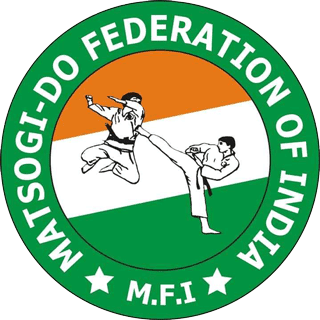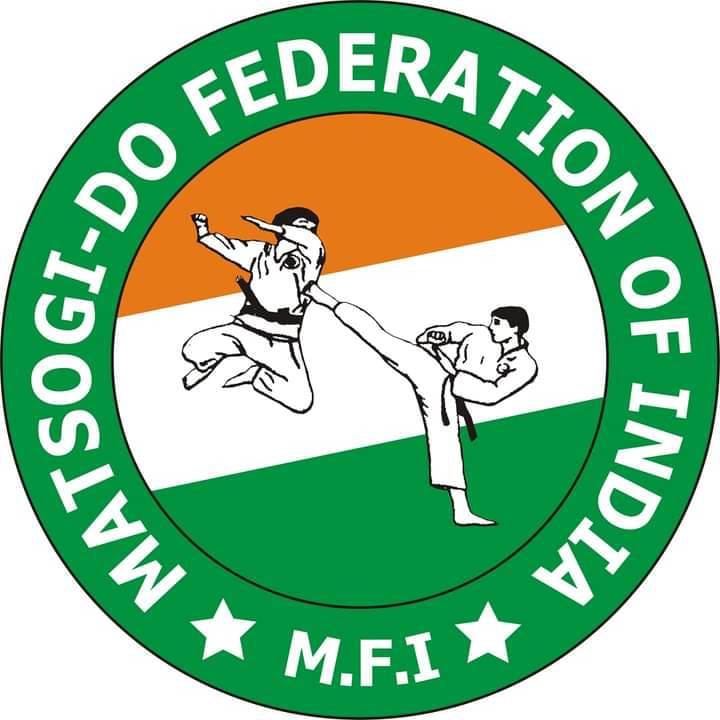WHAT IS GRADING
Grading is a test where an examiner judges a student’s technical performance and theoretical knowledge. This is also an assessment of a candidate’s character as a Matsogi-Do artist. Points are awarded and the students will be promoted or demoted accordingly.
Grading Requirement
Grading is an important aspect of any martial art training, as they should indicate and measure the student in that art, and allows further learning to take place.
Grading should be a test of technical ability, knowledge, Indomitable spirit, courage, and attitude.
The different colour belts indicate the student’s current level of achievements and also indicate the student’s seniority within that class the I.M.C Grading sequence as follows.
Meaning of the Belt Colours
White
White signifies innocence, as that of a beginner who has no previous knowledge of Matsogi – Do.
Yellow
Yellow signifies the Earth, from which a plant sprouts and take root, the Matsogi – Do foundation is being laid.
Green
Green signifies that plant’s growth as Matsogi – Do skill beings to develop.
Blue
Blue signifies the heaven towards which the plant matures into a towering tree as Matsogi-Do training in progress.
Red
Red signifies danger, cautioning the students to exercise control.
Brown
Brown signifies dangerous warning to student to stay away.
Black
Black is the opposite to white. Therefore, signifying the maturity and proficiency in Matsogi-Do. It also indicates the wearer’s imperviousness to darkness and fear.
Criteria for Grade and Degree.
- This criteria is based on the total number of days required for the student to obtain first degree black belt, and year for the further black belt degree.
- There are actually two programs a beginner may follow:
- 20 months course; six days per week.
- 25 months course ; three days per week.
| Belts | Duration | 26 Months | 21 months |
| 6th (White) | Duration | 4 Months | 3 Months |
| 5th (Yellow) | Duration | 4 Months | 3 Months |
| 4th (Green) | Duration | 4 Months | 3 Months |
| 3rd (Blue Belt) | Duration | 4 Months | 3 Months |
| 2nd (Red) | Duration | 3 Months | 3 Months |
| 1st (Brown Belt) | Duration | 6 Months | 6 Months |
Note:
It is not mandatory to adopt the above pattern by a State Governing Body or a Club. The above is given as a guidance. But it should be kept in mind that the purpose should be to teach the course till its proficiency.
Degree Requirement Year
1st Minimum Duration 6 (Months)
2nd Minimum Duration 1
3rd Minimum Duration 1
4th Minimum Duration 1
5th Minimum Duration 2
6th Minimum Duration 2
7th Minimum Duration 4
8th Minimum Duration 4
9th Minimum Duration 5
Note:
A reduction in duration is possible if an applicant attend International Seminar’s Authorized by IMC on regular interval.
Pass Incomplete (Re-Test Required)
When a student has deficiencies in several areas, they will be asked to re-test for the same rank at the next grading. Re-tests are also recommended when a student demonstrates inappropriate behaviour during a grading (e.g. swearing, disrespect, poor etiquette … etc)
Note:
Grading’s can only be conducted by a current IMC Instructor who is ranked 2nd Degree and above.
Code of Conduct
- Students must bow upon entering and leaving the training area.
- All instructions issued by the instructor or senior student should be carried out without dispute and to the best of your ability.
- Courtesy and respect should be shown towards all instructors and student all times, both in and out of the training Arena also.
- Students must answer clearly “Yes Sir’ or “Yes Ma’am” to instructor at all times.
- When bowing to the instructor of fellow students, the student must say “Aniasiyo.
- If you are late for class you must proceed directly to the front of the training are wait for the instructor to bow and signal for you to join the class.
- Permission to leave the class must be obtained from the instructor at all times, and the same procedure as 6 should be followed.
- Swearing and abusive language is not permitted in the class.
- Students must observe strict division or rank and seniority in Mastsogi-Do.
- During training, the approved MFI, Matsogi-Do uniform must be worn, including the appropriate belt, badges and print.
- Students and spectators are not permitted to eat or drink on the training area at any time.
- Students must not allow spectators / parents to distract them at any time during class.
- All training, grading and membership fees must be paid promptly at the start of each month/quartet/year whichever the case may be.
- All senior ranked students are responsible in ensuring that lower ranked and new students follow the rules.
- Students must never call the instructor by their first name whilst in Uniform or in the training.
- When lining up for class students should stand facing according to the highest rank starting from left of the instructor.
Any person who deliberately or repeatedly breaches any of the above rules, risks expulsion or suspension, from all Matsogi – Do school falling under “Matsogi-Do federation of India”.



